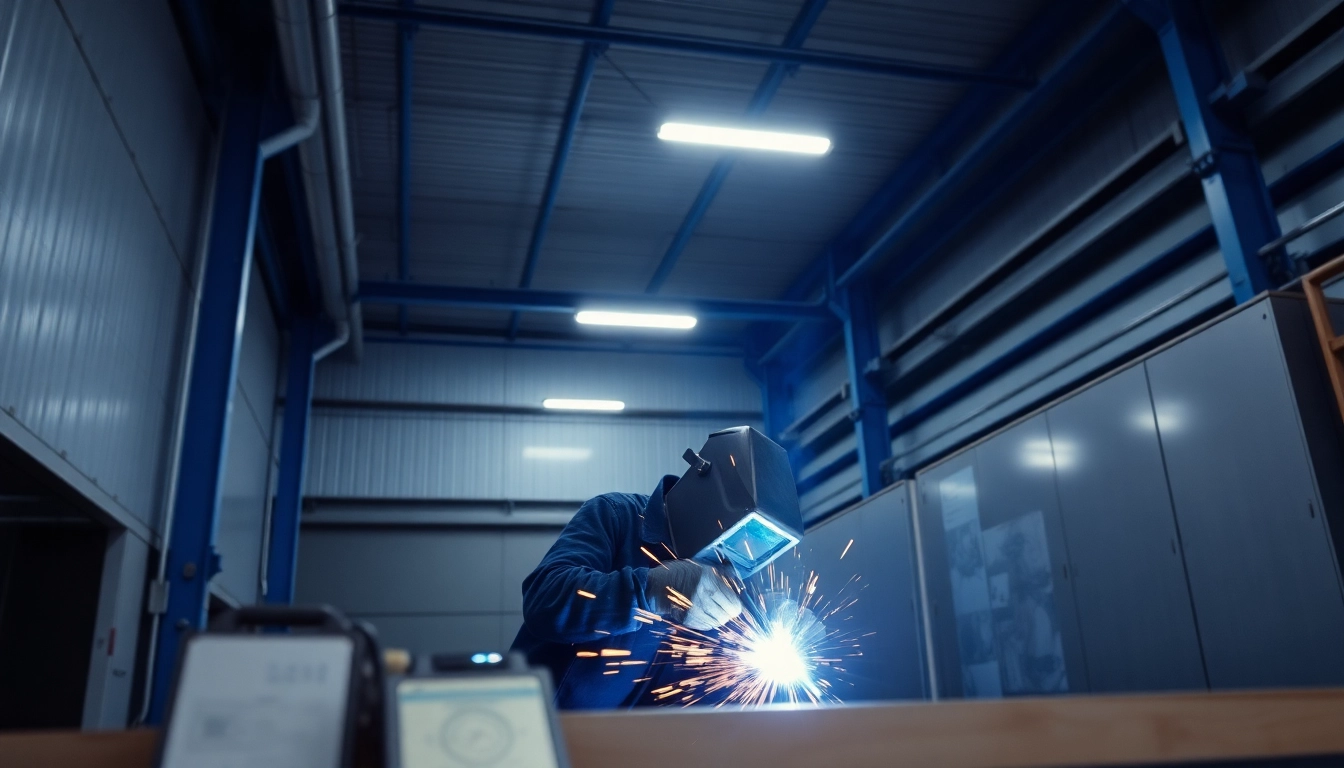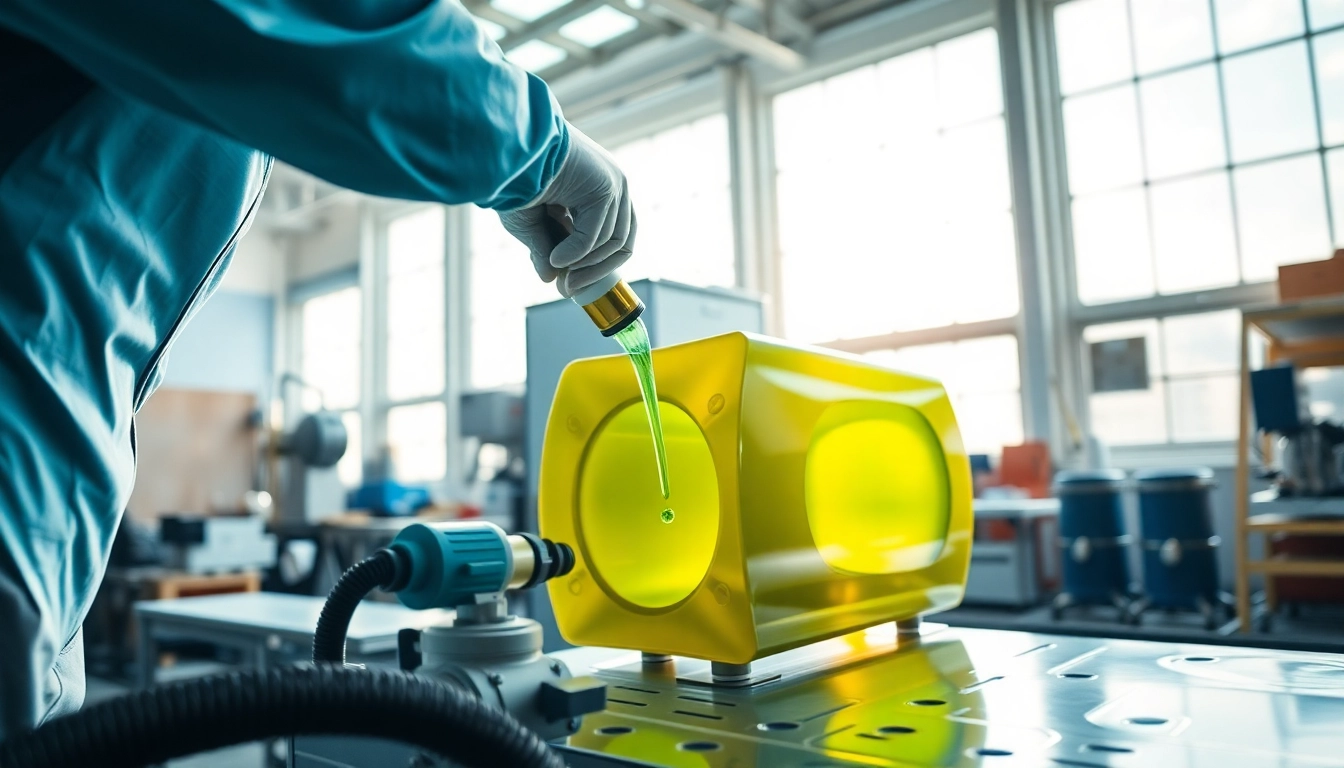Understanding AC DC TIG Welders
What is an AC DC TIG Welder?
An AC DC TIG welder is a versatile piece of equipment primarily used for welding. The term “TIG” stands for Tungsten Inert Gas, and it highlights the process’s reliance on a non-consumable tungsten electrode to produce welds. The “AC” (alternating current) and “DC” (direct current) capabilities give fabricators and welders the flexibility to work with various metals and welding situations.
AC welders are particularly effective when dealing with materials like aluminum, which tend to oxidize quickly. The alternating current helps to break this oxide layer, ensuring a cleaner weld. DC welders, on the other hand, are generally favored for welding metals such as steel and stainless steel, where a stable and focused arc is crucial. This dual functionality allows users to take on a broader array of projects with a single device, making the ac dc tig welder an essential tool in both professional and hobbyist workshops.
Key Features and Benefits of AC DC TIG Welders
AC DC TIG welders come equipped with several key features that enhance their usability and effectiveness:
- Dual Polarity: The ability to switch between AC and DC allows for greater versatility in welding applications. This feature is particularly beneficial for welders who work with a variety of metals.
- Precision Welding: TIG welding is renowned for its ability to create clean, precise welds. This is crucial for applications where aesthetics and structural integrity are paramount.
- Control Over Heat Input: Most models offer adjustable heat settings, allowing welders to tailor the arc’s intensity according to the specific material and thickness being welded.
- Enhanced Arc Stability: Many modern AC DC TIG welders include advanced technology that helps maintain a stable arc even under challenging conditions.
- Portable Options: Lightweight and compact models have become available, making it easy for welders to transport their equipment between job sites.
How AC vs. DC Affects Welding Quality
Understanding the differences between AC and DC and how each impacts welding quality is crucial for achieving successful weld results:
- AC Welding: Alternating current is primarily used on non-ferrous metals like aluminum and magnesium. It facilitates effective cleaning of the base material by removing surface contaminants. This means fewer chances of porosity in the weld, which can compromise strength.
- DC Welding: Direct current is typically employed for ferrous metals, providing a more focused and stable arc. This leads to deeper penetration and faster travel speeds, which are essential for thicker materials.
- Weld Appearance: AC welds often exhibit a more uniform appearance, while DC welds can be smoother with less heat-affected zone.
- Welding Process Speed: The speed of the welding process can also differ; DC generally allows for quicker weld completion.
Applications of AC DC TIG Welding
Welding Aluminum with AC DC TIG Welders
AC TIG welding is particularly valued for aluminum applications due to its ability to prevent oxidation and maintain the integrity of the weld. When working with aluminum:
- Pre-Weld Preparation: It’s crucial to clean the surface to remove all oxides and grease, which can affect the weld’s quality.
- Weld Technique: Use a push technique when welding aluminum, where the torch is moved in the direction of the weld pool. This helps in maintaining a steady arc length and reducing the heat input, which is essential for thinner materials.
- Filler Material: Selecting the right filler rod that matches the aluminum grade being welded is vital to achieving optimal results.
- Baseline Settings: Begin with machine settings such as a higher frequency and lower amperage to create a stable arc. Adjust as needed based on the thickness and heat sensitivity of the aluminum.
Best Practices for Stainless Steel and Other Metals
When working with stainless steel and other metals, certain strategies can enhance results:
- Edge Preparation: Proper edge preparation, including beveling, can significantly improve joint strength.
- Back Purging: For stainless steel, utilizing back purging can prevent oxidation and maintain the integrity of the weld inside the pipe or material.
- Heat Management: Stainless steel is sensitive to heat; thus, controlling the heat input is crucial to reduce warping and distortion.
- Pulsed TIG Welding: Consider using pulsed TIG welding for intricate designs or when working with thin materials to prevent burn-through.
Common Industries Using AC DC TIG Welding
AC DC TIG welding plays a critical role in various industries, including:
- Aerospace: Precise welds are required to ensure structural integrity in aircraft components.
- Automotive: Many automotive manufacturers employ TIG welding for aluminum and stainless steel parts, emphasizing quality and aesthetics.
- Fabrication Shops: General fabrication and repair shops value the ability to work on multiple metals effectively.
- Marine: With a high focus on durability and corrosion resistance, TIG welding is favored in boat manufacturing.
Choosing the Right Model
Top AC DC TIG Welders on the Market
When selecting an AC DC TIG welder, various models stand out for their performance and reliability. Here’s a look at some top contenders:
- Everlast PowerTIG 200DV: Renowned for its dual-voltage functions, ensuring compatibility in different work environments while offering excellent AC and DC performance.
- PrimeWeld TIG225X: This model is praised for its user-friendly controls and robust design, making it suitable for both beginners and professionals.
- Miller Multimatic 220: A multipurpose welder that adjusts settings automatically, optimal for users transitioning between TIG and MIG welding.
- Lincoln Electric Square Wave TIG 200: Known for its reliability and efficiency, particularly in aluminum applications with excellent arc control.
Features to Look For in a High-Quality Welder
While shopping for an AC DC TIG welder, consider these essential features:
- Amperage Range: Ensure the welder can reach the amperage levels necessary for your intended applications.
- Weight and Portability: If you need to move your welder frequently, look for a lighter, portable option.
- Foot Pedal Control: This allows for better control over the welding process, significantly improving results, especially on thin materials.
- Cooling System: An efficient cooling system is essential to prevent overheating and extending the welder’s lifespan.
Price Ranges and What to Expect
The price range for AC DC TIG welders can vary significantly, and here’s what you can expect:
- Entry-Level Units: Typically priced between $300 to $800, suitable for beginners and lighter welding tasks.
- Mid-Range Models: These range from $800 to $2000, often providing additional features and better performance for professionals.
- High-End Units: Ranging from $2000 and upwards, these welder are designed for heavy industrial use, durability, and precision.
Maintenance and Troubleshooting
Regular Maintenance to Ensure Longevity
To keep your AC DC TIG welder in top condition, follow these regular maintenance tips:
- Keep It Clean: Regularly clean the torch, electrode, and connections to prevent buildup that can affect performance.
- Inspect and Replace Consumables: Check gas lenses, nozzles, and tungsten electrodes for wear and replace them as necessary to ensure clean welds.
- Check Electrical Connections: Ensure all electrical connections are tight and free of corrosion to prevent power issues and increase safety.
- Store Properly: When not in use, store the welder in a dry place to avoid deterioration from moisture.
Common Issues with AC DC TIG Welders
Despite their reliability, AC DC TIG welders may encounter issues:
- Inconsistent Arc: This could result from a dirty work surface or old tungsten electrodes.
- Poor Gas Coverage: An insufficient gas flow can lead to contamination; check gas connections and flow rates.
- Overheating: Can occur from prolonged use without cooling breaks; ensure you’re adhering to duty cycle recommendations.
- Welding Inconsistencies: This may arise from user technique or inadequate settings for the specific material being welded.
Troubleshooting Tips for Optimal Performance
If you encounter problems with your welder, utilize these troubleshooting tips:
- Check Your Setup: Ensure all components are set up correctly, including gas type and flow rates.
- Adjust Settings: If you experience issues, revisit your pre-weld settings to ensure they’re appropriate for the material and thickness being welded.
- Test Different Electrodes: Experiment with different tungsten electrodes to find what works best for your specific project conditions.
- Refer to the Manual: Always consult the welder’s manual for specific troubleshooting guidance tailored to that model.
Customer Reviews and Comparisons
A Case Study: Comparing Popular AC DC TIG Welders
Analyzing user feedback offers valuable insight into the performance of various models. Here’s a comparison of some top units based on customer reviews:
- Everlast PowerTIG: Frequently receives praise for its reliability and excellent aluminum welding capability, although some users noted a steep learning curve.
- Lincoln Electric TIG 200: Users commend its ease of use and great results on stainless steel but mention its heavier weight as a drawback for portability.
- Millermatic 220: Many note its versatility and consistent performance across multiple materials, making it popular among professional welders.
What Users are Saying About Their Preferred Models
User reviews indicate that familiarity with a specific model allows for better results over time. Experienced welders often share tips for getting the most out of their machines:
- Adjust amperage settings based on material thickness to minimize warping.
- Always practice on scrap pieces to refine technique and setup.
- Join welding forums for real-time advice and tips from fellow users.
Expert Recommendations for First-Time Buyers
For those new to the world of TIG welding, experts recommend starting with user-friendly models featuring clear controls and excellent customer support. Consider the following:
- Look for models with good warranty options, indicating manufacturer confidence in the product.
- Research additional resources or beginner workshops available when purchasing from a manufacturer.
- Join online communities to receive hands-on advice and experiences from other welders.



